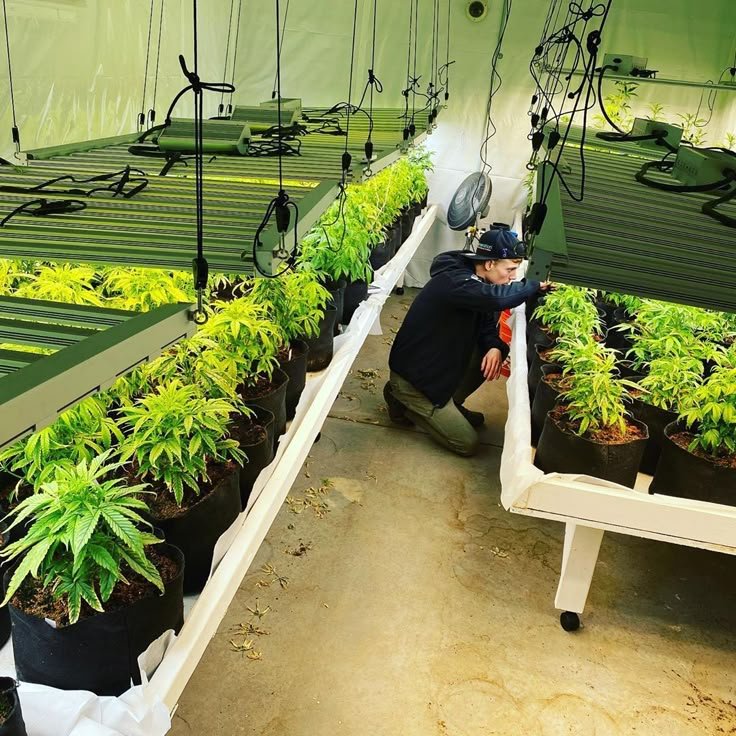Uncategorized
Home Cannabis Cultivation: What You Need to Know in 2025
The rise of legal cannabis has empowered enthusiasts to take cultivation into their own hands. As we move through 2025, growing cannabis at home 2025 has become more accessible than ever, thanks to advancements in technology, simplified cannabis cultivation kits, and evolving home cannabis growing laws. Whether you’re a first-time grower or a seasoned cultivator, understanding the latest home grow tips cannabis experts recommend can make the difference between a modest harvest and a bumper crop. This guide explores everything you need to know about indoor cannabis gardening, from selecting the right equipment to navigating legal considerations, ensuring your home grow operation thrives in the current landscape.
The Growing Appeal of Home Cultivation
The shift toward growing cannabis at home 2025 reflects broader trends in self-sufficiency and personalized medicine. More consumers are opting to cultivate their own cannabis to ensure quality, avoid dispensary markups, and experiment with unique strains. Advances in cannabis cultivation kits have also lowered the barrier to entry, providing beginners with plug-and-play systems that simplify the learning curve.
Beyond cost savings, home growing allows for complete control over the cultivation process. Organic growers can avoid pesticides and synthetic nutrients, while medical users can tailor strains to their specific needs. With the right home grow tips cannabis, even those with limited space can achieve impressive yields.
Essential Home Grow Tips Cannabis Experts Swear By
Successful cultivation starts with mastering the fundamentals. One of the most crucial home grow tips cannabis professionals emphasize is selecting the right genetics. Autoflowering strains, which don’t require light cycle adjustments, are ideal for beginners, while photoperiod strains offer more control over plant size and yield for advanced growers.
Lighting remains a cornerstone of indoor cannabis gardening. In 2025, full-spectrum LED lights dominate the market, offering energy efficiency and customizable light spectra to optimize growth stages. Experts recommend maintaining a consistent light schedule—18 hours on during vegetation, switching to 12 hours for flowering—to prevent stress and hermaphroditism.
Nutrient management is another critical factor. Over-fertilization is a common mistake, leading to nutrient burn and stunted growth. Start with a balanced, cannabis-specific nutrient regimen and adjust based on plant response. Organic options like compost teas and mycorrhizal fungi can enhance root health and terpene production.
Choosing the Right Cannabis Cultivation Kits
For newcomers, cannabis cultivation kits provide an all-in-one solution to jumpstart their growing journey. These kits typically include lighting, ventilation, growing medium, and sometimes even seeds or clones. In 2025, smart kits with IoT integration are gaining popularity, allowing growers to monitor and adjust conditions via smartphone apps.
When selecting a kit, consider your space and goals. Compact hydroponic systems like the AeroGarden are perfect for small-scale growers, while larger tent setups accommodate multiple plants. Look for kits with carbon filters to manage odor—a key consideration for discreet indoor cannabis gardening.
Indoor Cannabis Gardening: Techniques for Maximum Yield
Mastering indoor cannabis gardening requires attention to detail. Training techniques like Low-Stress Training (LST) and Screen of Green (ScrOG) maximize light exposure, increasing bud production. LST involves gently bending stems to create an even canopy, while ScrOG uses a mesh screen to guide growth horizontally.
Climate control is equally vital. Cannabis thrives at 70-85°F (21-30°C) during the day and slightly cooler at night. Humidity should range from 40-60%, with lower levels in flowering to prevent mold. Investing in a quality hygrometer and humidifier/dehumidifier ensures optimal conditions.
Watering practices also impact success. Overwatering is a leading cause of root rot, while underwatering stresses plants. The “lift test”—checking pot weight before and after watering—helps gauge moisture needs. For soil growers, letting the top inch dry out between waterings is a reliable rule.
Navigating Home Cannabis Growing Laws in 2025
Before planting your first seed, understanding home cannabis growing laws is non-negotiable. Regulations vary widely by region, with some areas allowing six plants per household and others prohibiting home grows entirely. In the U.S., states like California and Colorado permit recreational cultivation, while others require medical cards.
Even where legal, restrictions often apply. Many jurisdictions mandate that plants be grown in locked, non-visible areas to prevent theft and underage access. Outdoor cultivation may be prohibited in urban areas, pushing growers toward indoor cannabis gardening. Always verify local laws to avoid fines or confiscation.
Troubleshooting Common Home Grow Challenges
Even with the best home grow tips cannabis, problems can arise. Pests like spider mites and aphids are common in indoor grows. Integrated Pest Management (IPM) strategies—such as introducing predatory insects or using neem oil—offer organic solutions.
Nutrient deficiencies manifest in leaf discoloration. Yellowing lower leaves often indicate nitrogen shortage, while purple stems may signal phosphorus deficiency. pH imbalances (ideal range: 6.0-7.0 for soil, 5.5-6.5 for hydroponics) frequently underlie these issues, making a pH meter a wise investment.
For mold and mildew, prevention is key. Proper airflow, humidity control, and spacing between plants reduce risk. If powdery mildew appears, hydrogen peroxide sprays can treat early-stage infections without harsh chemicals.
The Future of Home Cannabis Cultivation
As we look ahead, growing cannabis at home 2025 is set to become even more user-friendly. Advances in AI-powered grow systems will automate lighting, feeding, and climate adjustments, while CRISPR gene-editing may enable custom strain development for home breeders.
Sustainability will also take center stage. Solar-powered grow tents and water-recycling systems will appeal to eco-conscious cultivators. Meanwhile, decentralized blockchain platforms could allow home growers to legally trade seeds and clones within regulated networks.
FAQs About Home Cannabis Cultivation
1. How much cannabis can one plant yield?
Indoor plants typically produce 1-5 ounces, depending on strain, training, and grow conditions. Optimized setups can yield more.
2. What’s the easiest strain for beginners?
Autoflowering strains like Northern Light Auto or Blueberry Auto are forgiving and mature quickly (8-10 weeks).
3. Can I grow cannabis in an apartment without detection?
Yes, with carbon filters, low-odor strains, and discreet cannabis cultivation kits, apartment grows can be undetectable.
4. Are homegrown cannabis buds as potent as dispensary products?
With proper care, homegrown can surpass dispensary quality, as fresh, uncured buds retain more terpenes and cannabinoids.
Final Thoughts
The world of growing cannabis at home 2025 offers unparalleled freedom and satisfaction. By applying these home grow tips cannabis, selecting the right cannabis cultivation kits, and adhering to home cannabis growing laws, anyone can cultivate premium cannabis in their own space.
As technology and laws evolve, home cultivation will only become more accessible. Whether for personal use, medical needs, or pure passion, indoor cannabis gardening represents the future of self-sufficient, high-quality cannabis production.
For more expert insights and updates on home cultivation, stay tuned to Pureherbalessence—your trusted guide to cannabis mastery.

